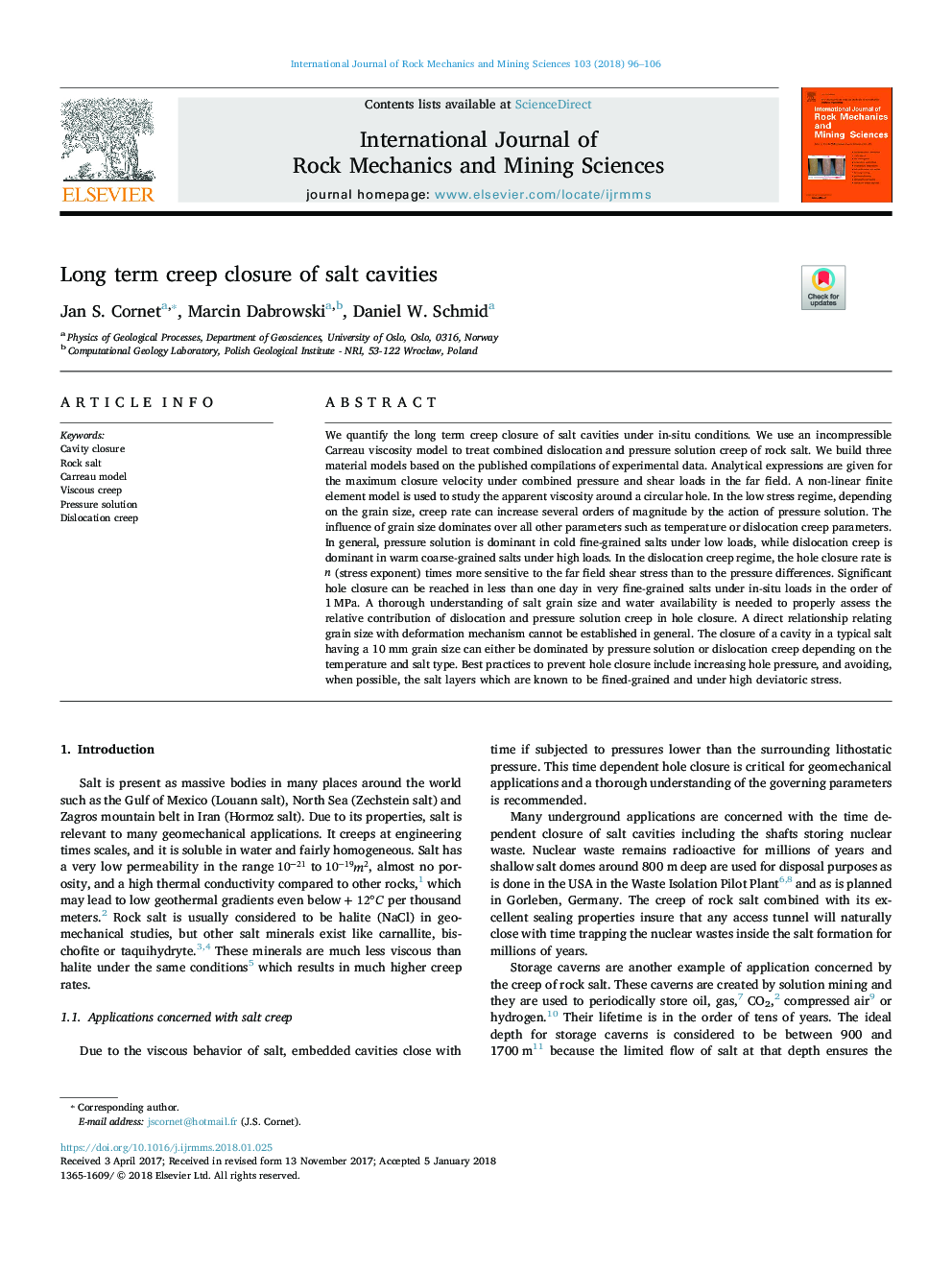| کد مقاله | کد نشریه | سال انتشار | مقاله انگلیسی | نسخه تمام متن |
|---|---|---|---|---|
| 7206328 | 1468666 | 2018 | 11 صفحه PDF | دانلود رایگان |
عنوان انگلیسی مقاله ISI
Long term creep closure of salt cavities
ترجمه فارسی عنوان
بستن طولانی مدت خزش حفره های نمکی
دانلود مقاله + سفارش ترجمه
دانلود مقاله ISI انگلیسی
رایگان برای ایرانیان
کلمات کلیدی
موضوعات مرتبط
مهندسی و علوم پایه
علوم زمین و سیارات
مهندسی ژئوتکنیک و زمین شناسی مهندسی
چکیده انگلیسی
We quantify the long term creep closure of salt cavities under in-situ conditions. We use an incompressible Carreau viscosity model to treat combined dislocation and pressure solution creep of rock salt. We build three material models based on the published compilations of experimental data. Analytical expressions are given for the maximum closure velocity under combined pressure and shear loads in the far field. A non-linear finite element model is used to study the apparent viscosity around a circular hole. In the low stress regime, depending on the grain size, creep rate can increase several orders of magnitude by the action of pressure solution. The influence of grain size dominates over all other parameters such as temperature or dislocation creep parameters. In general, pressure solution is dominant in cold fine-grained salts under low loads, while dislocation creep is dominant in warm coarse-grained salts under high loads. In the dislocation creep regime, the hole closure rate is n (stress exponent) times more sensitive to the far field shear stress than to the pressure differences. Significant hole closure can be reached in less than one day in very fine-grained salts under in-situ loads in the order of 1Â MPa. A thorough understanding of salt grain size and water availability is needed to properly assess the relative contribution of dislocation and pressure solution creep in hole closure. A direct relationship relating grain size with deformation mechanism cannot be established in general. The closure of a cavity in a typical salt having a 10Â mm grain size can either be dominated by pressure solution or dislocation creep depending on the temperature and salt type. Best practices to prevent hole closure include increasing hole pressure, and avoiding, when possible, the salt layers which are known to be fined-grained and under high deviatoric stress.
ناشر
Database: Elsevier - ScienceDirect (ساینس دایرکت)
Journal: International Journal of Rock Mechanics and Mining Sciences - Volume 103, March 2018, Pages 96-106
Journal: International Journal of Rock Mechanics and Mining Sciences - Volume 103, March 2018, Pages 96-106
نویسندگان
Jan S. Cornet, Marcin Dabrowski, Daniel W. Schmid,
